Waveform recognition of the modes
Looking at the images of the waveform we can confirm that it seems possible to identify the modes by the Laryngograph waveforms to a certain extend. There are some extend patterns in the waveform that could be used to identify the modes. (See Waveform recognizion in Neutral, Curbing, Overdrive and Edge)
You can see the green trace is the Laryngograph changes, where you can see the very distinctive wave patterns for the different type of modes.
Waveform in Distortion
Another study was recording the laryngograph ELG signal with the acoustic signal using the speech studio program for the analysis.
This is the type of output you get with the speech studio program. You can see the spectrogram with Overdrive and the see that the spectrum changes when you are adding in distortion.
The green line is the fx trace and you can see that it is fairly level, but you can see that the contact quotient (Qx) (the purple line) is variable during the vocal mode and seems to break up during distortion.
The little frame in the middle picture the magnified view, with 2 lines. The top one is a blue line that is the speech signal, the one underneath is the laryngograph line, the electroglottal measure, that gives us a measure of the vocal folds activity. Here you see a nice and regular waveform when the mode is sustained.
On the sustained notes you can’t see much activity, just a waveform that indicates which mode is being used, and then when the distortion comes on you’ll see very little variation indicating that the vocal folds is vibrating fairly regular underneath the distortion. There is only a little bit of pertubation in both amplitude and frequency. Often only the baseline of the waveform gets unstable and it shows peek variation and variantions in the size and the width of the waveform , but the shape of the waveform remains the same. This that it is still the same mode that is sung and the vocal folds vibration is remaining unhindered during distortion.
Contrary to an uncontrolled constriction where everything seem to constrict and you see no vocal fold movement, here there is a very deliberate, almost relaxed movement of the false cord, allowing them to take in part the vibration. At the same time the vocal folds are almost held apart a little bit and the false cords are comming in and producing the aditional sound effect. By displaying the same waveform from mode to mode with distortion we asume that the vocal folds underneath the vibration of the false cords are vibrating regularly.
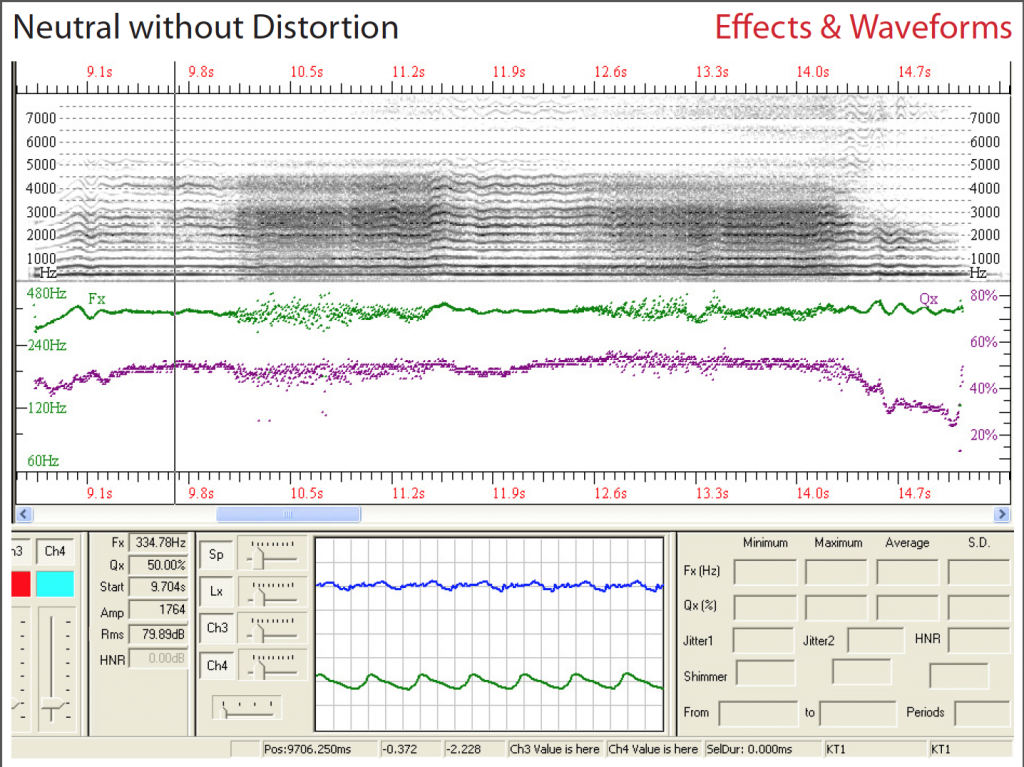
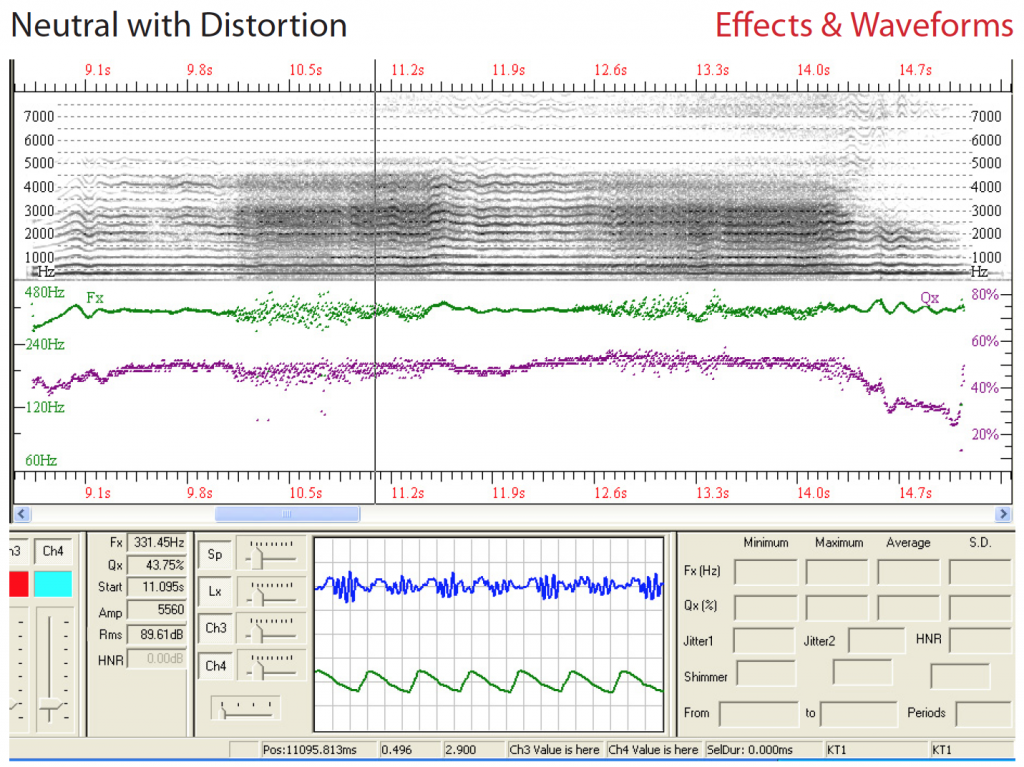
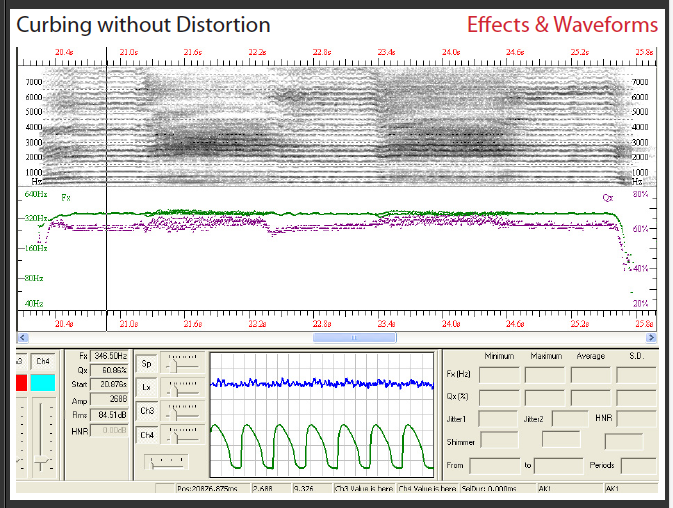
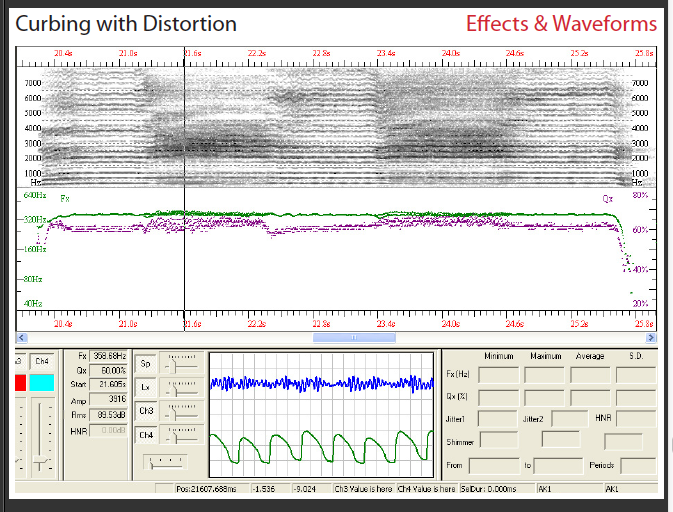


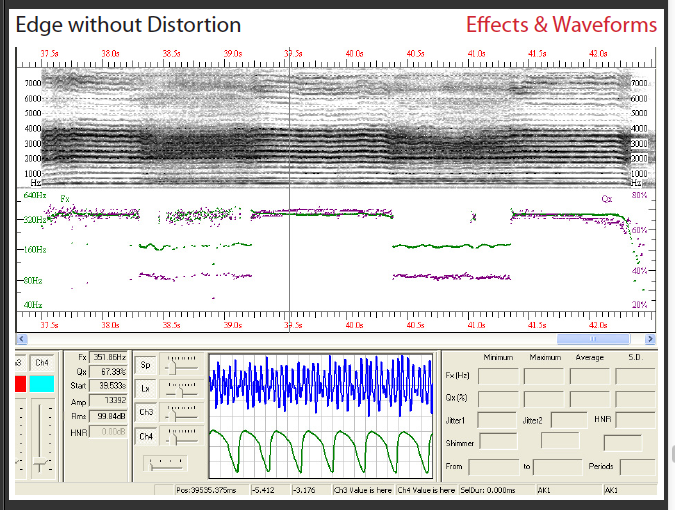
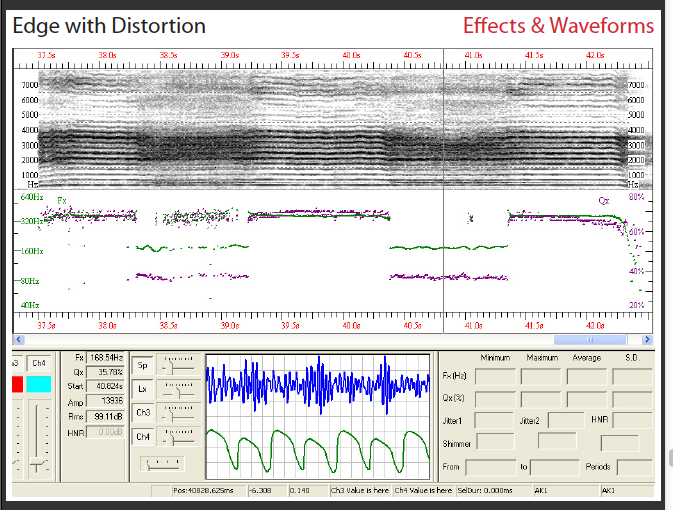
This information comes from an effect study with the title ‘Can vocal effects such as distortion, growling, rattle and grunting and be produced without traumatising the vocal folds?’. This study was presented by Julian McGlashan at PEVOC7 conference in Groningen, Netherlands, 2007.
This information comes from a study Distortion study with the title ‘Vocal effects in singing: a study of intentional distortion using laryngostroboscopy and electrolaryngography’. This study was presented by Julian McGlashan at AQL ‘10th International Conference on Advances in Quantitative Laryngology, Voice and Speech Research’ conference in Cincinnati, Ohio, USA June, 2013.
